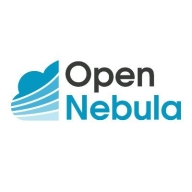


Red Hat CloudForms and OpenNebula are competing tools in the cloud management platform space. Red Hat CloudForms is favored for its pricing satisfaction and support, while OpenNebula is often preferred for its robust feature set.
Features: Red Hat CloudForms excels in hybrid cloud management, automation capabilities, and offers advanced monitoring and reporting, whereas OpenNebula impresses with integrated multi-cloud orchestration, a focus on scalability, and simplicity.
Room for Improvement: Red Hat CloudForms can improve by simplifying its initial setup processes, enhancing ease of use, and expanding flexibility in integration. OpenNebula could benefit from enhanced support options, expanding its feature documentation, and increased focus on advanced analytics.
Ease of Deployment and Customer Service: OpenNebula is known for straightforward deployment and efficient, tailored customer service. Red Hat CloudForms offers comprehensive support but may require more complex initial setup, which can be beneficial for enterprises needing deep customization.
Pricing and ROI: Red Hat CloudForms generally presents a higher initial setup cost with significant ROI through its extensive feature suite, while OpenNebula offers a cost-effective entry with lower scripting overhead and operational expenses, delivering faster ROI due to streamlined deployment.



IBM Turbonomic offers automation, planning, and right-sizing recommendations to streamline resource management, improve efficiencies, and optimize costs across virtualized environments and cloud platforms.
IBM Turbonomic is valued for its capability to optimize resource allocation and monitor virtual environments efficiently. It facilitates automated decision-making in VM sizing, load balancing, and cost optimization for both on-premises and cloud deployments. Users can leverage insights for workload placement, ensure peak performance assurance, and effectively right-size across VMware and Azure. The ongoing transition to HTML5 aims to improve visual and navigational ease, while expanded reporting features are anticipated. Opportunities for improved training, documentation, and integrations enhance platform usability and functionality.
What Are the Key Features?In finance, IBM Turbonomic aids in maintaining platform efficiency during market fluctuations. Healthcare organizations leverage its capability for resource optimization during high-demand periods to enhance patient care support. Retailers use it for planning in peak seasons, ensuring resources align with fluctuating demand to maintain performance continuity.
OpenNebula provides the most simple but feature-rich and flexible solution for the comprehensive management of virtualized data centers to enable private, public and hybrid IaaS clouds. OpenNebula interoperability makes cloud an evolution by leveraging existing IT assets, protecting your investments, and avoiding vendor lock-in.
OpenNebula is a turnkey enterprise-ready solution that includes all the features needed to provide an on-premises (private) cloud offering, and to offer public cloud services.
Manage container, virtual, private, and public cloud infrastructures
Managing a complex, hybrid IT environment can require multiple management tools, redundant policy implementations, and extra staff to handle the operations. Red Hat® CloudForms simplifies IT, providing unified management and operations in a hybrid environment.
As your IT infrastructure progresses from traditional virtualization toward an Infrastructure-as-a-Service (IaaS) model, CloudForms evolves, protecting your investments and providing consistent user experience and functionality.
We monitor all Cloud Management reviews to prevent fraudulent reviews and keep review quality high. We do not post reviews by company employees or direct competitors. We validate each review for authenticity via cross-reference with LinkedIn, and personal follow-up with the reviewer when necessary.